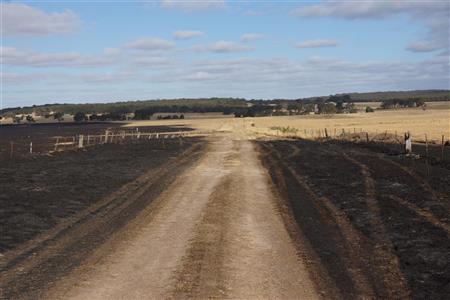Australian scientists have developed a cutting-edge computed tomography (CT) scanning method that has the capacity to screen large samples of wheat for drought and heat tolerance.
The breakthrough has the potential to provide farmers increased winter crop options and to bolster productivity in the face of increased seasonal variability.
The University of Adelaide’s School of Agriculture, Food and Wine worked in collaboration with the Fraunhofer Institute for Integrated Circuits’ Development Centre for Z-ray Technology in Germany on the research.
The scientists involved in the program believe that the new system will allow for a more accurate and rapid analysis of wheat heads which will speed up the process of breeding for plants better adapted to climate change.
The technology will also enable researchers to analyse some grain traits automatically, as opposed to the current method that involves intensive manual labour.
In order to identify genes responsible for grain yield and stress tolerance, researchers need precise analysis of grain yield components along each wheat head.
The current method of obtaining yield data is done via crude machine threshing from field trials with lots of seeds lost or destroyed in the process that is often costly and time consuming.
Recent University of Adelaide PhD graduate, Dr Jessica Schmidt, said the development of a computed tomography (CT) scanning method would be extremely beneficial for future wheat grains research.
“This system enables not just a much more accurate but also faster solution to determine even the smallest differences in grain characteristics,” Ms Schmidt said.
“This allows us to compare a much larger number of genetically different plants, important for identifying genomic regions and stress mechanisms that will enable plants to do well under climate change.
“It also allows us to analyse traits which were either very difficult and/or time-consuming to analyse such as grain size, grain morphology and grain weight along the spike which is relevant when stresses occur at different timepoints of development.
“For instance, we have observed certain types of seed morphologies caused by drought and heat stress in previous years but were never able to categorise or analyse them.”
Science and innovation are key to agriculture’s vision to be a $100 billion industry by 2030. The NFF’s 2030 Roadmap, the plan to take the sector to $100 billion, sets ambitious targets for agriculture’s innovations credentials.
“Our goal is for Australia to be a top 20 nation for innovation efficiency,” NFF President Fiona Simson said.
“At the heart of innovation efficiency is a reduction in the time between the development of new technologies and their application on farm.
“It is vital that farmers have access to new technologies, including new plant varieties, that will boost productivity and ultimately, increase Australian agriculture’s global competitiveness.”







